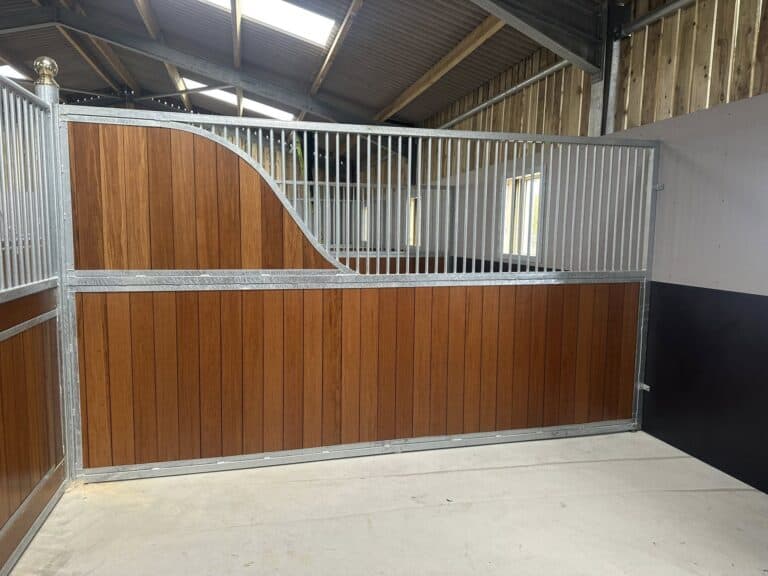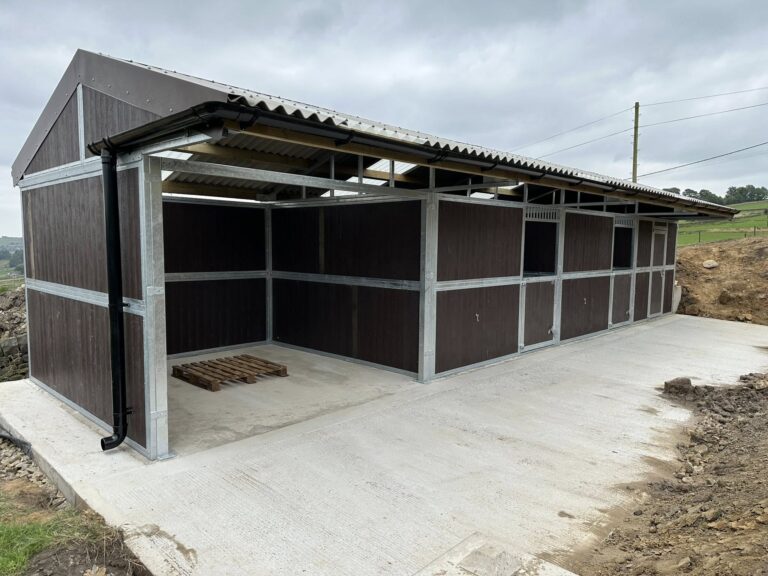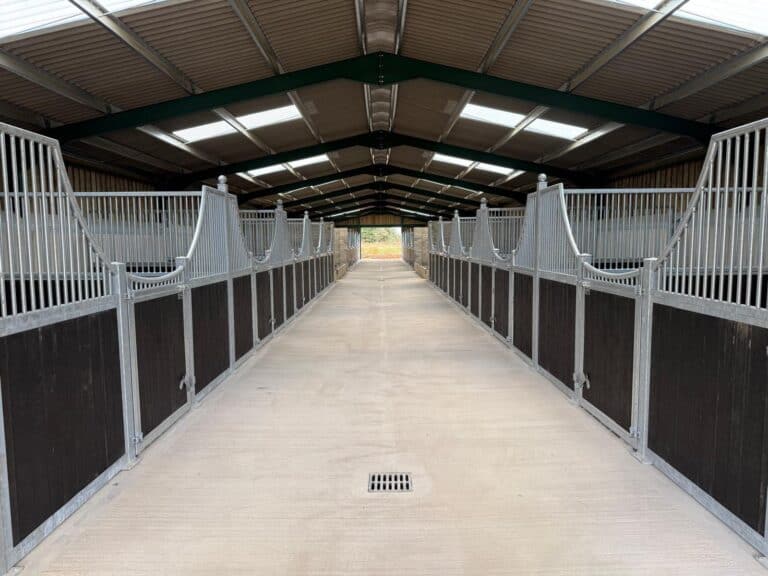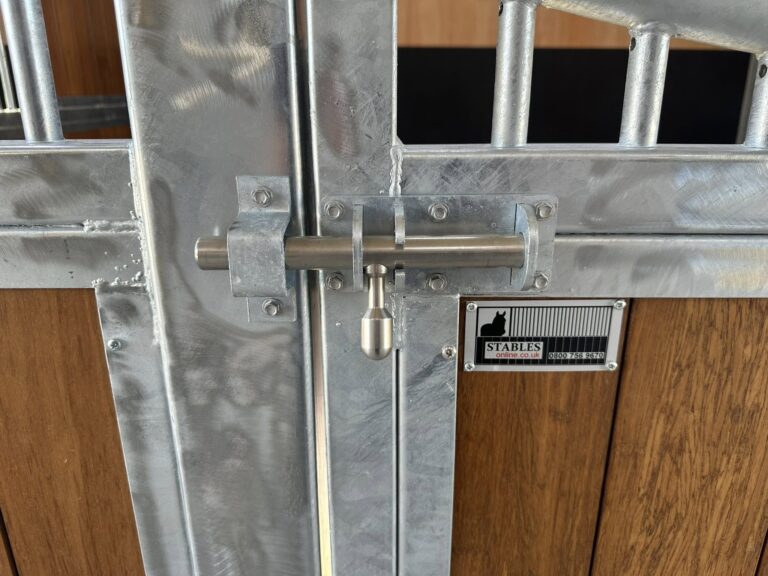When planning new equestrian facilities, the most fundamental decision you face is choosing the core construction material. For generations, timber stables were the traditional choice, admired for their classic aesthetic. However, in the modern era of stable manufacturing, steel-framed buildings have emerged as the superior choice, especially for owners and businesses prioritising durability, low maintenance, and ultimate safety.
At Stables Online, we specialise in premium, British-made steel structures. We understand the appeal of wood, but when you look at the facts—particularly against the harsh British climate—steel offers better long-term performance. Here is a direct, head-to-head comparison to help you decide which material is the true winner for your equestrian investment.
Initial Cost vs. Long-Term Value: The True Cost of Your Stable
Understanding the real cost of a stable means looking beyond the initial quote. A wooden stable might appear cheaper upfront, but its recurring costs quickly negate that saving.
Upfront Price Tag: Is Wood Really Cheaper Than Steel?
Initial costs can vary widely, but a high-quality timber stable designed for longevity will often cost as much as, or more than, a prefabricated, heavy-duty steel frame stable. Steel manufacturing processes have become highly efficient, making it an extremely cost-competitive option right out of the gate.
Calculating Longevity: Comparing the Lifespan of Galvanized Steel vs. Treated Timber
This is where steel truly dominates. Galvanized steel frames are engineered to last several decades with minimal degradation. Timber, even pressure-treated wood, has a finite lifespan and is vulnerable to natural decay, warping, and insect damage. You may expect to replace or majorly repair a timber structure much sooner than a comparable steel one.
The Hidden Cost of Maintenance: Sealing, Painting, and Rot Prevention
Wooden stables are a continuous maintenance chore. They require regular sealing, painting, and treatment to fight rot and insect infestation, especially in damp environments like Scotland. Our steel stables are virtually maintenance-free. The galvanised finish protects the frame, requiring no annual treatment, saving you significant time and money over the life of the building.
Durability & Weather Resilience in the UK Climate
The unpredictable and often severe weather in the UK and Ireland demands a robust building material.
Withstanding the Elements: How Steel Handles High Winds, Snow, and Damp
Steel-framed buildings are structurally superior. They are engineered to precise specifications, allowing them to withstand much higher wind loads and heavier snowfalls than standard timber structures. Furthermore, unlike wood, steel will not absorb moisture, meaning it won’t swell, warp, or shift due to extreme damp or heat cycles.
Rust vs. Rot: The Major Structural Threat to Each Material
For wood, the enemy is rot. Once water ingress or insect damage compromises the structural integrity of the timber, the building’s lifespan is drastically reduced. For steel, the primary threat is rust, but this is neutralized by hot-dip galvanisation. This process creates a protective zinc coating that locks out corrosion, guaranteeing the strength of the frame for decades.
Horse-Proof Construction: Cribbing, Kicking, and Structural Integrity
Horses are powerful animals, and stables must withstand immense force. Wood is easily damaged by kicking and can be a chew-risk (cribbing). Steel framing, particularly our systems with steel-encased infills, prevents cribbing damage and holds up better to daily wear and tear, ensuring the structure remains sound and safe for your horses.

Safety First: Fire Resistance and Hygiene
In the equestrian world, fire is one of the greatest risks due to the presence of bedding, hay, and feed.
Fire Safety Comparison: The Non-Combustible Advantage of Steel
This is a critical difference. Wood is combustible and acts as fuel. Steel is non-combustible and fire-resistant. Choosing a steel frame significantly lowers the fire risk for your animals and greatly increases the time available for emergency evacuation, offering better protection for your most valuable assets.
Cleaning & Hygiene: Why Steel Structures Are Easier to Disinfect and Maintain
Wooden surfaces can be porous, trapping moisture, bacteria, and odours, making deep cleaning a challenge. Steel surfaces are non-porous and easy to clean, wipe, or hose down, promoting a more hygienic environment and reducing the risk of respiratory issues caused by mould or mildew.
Design & Flexibility: Custom-Built Solutions
Modern stabling needs to be adaptable, whether you are running a busy livery yard or a private competition facility.
Customization: Designing Bespoke Layouts with Modular Steel
Our steel frames are designed using modular systems. This allows for complete flexibility in layout, including complex designs like American barns and U-shaped blocks, all tailored perfectly to your land. Best of all, they can be easily extended or adapted down the line, future-proofing your investment.
Speed of Installation: Prefabricated Steel vs. Traditional Timber Builds
Because steel structures arrive in prefabricated sections, the on-site assembly is significantly faster and more efficient than traditional, time-consuming timber construction. This means less disruption to your yard and getting your horses stabled sooner.
Making the Best Investment for Your Equestrian Future
The choice between steel and wood is ultimately about balancing initial cost with long-term performance, safety, and reduced maintenance.
While wood offers a traditional aesthetic, a steel-framed stable from Stables Online delivers superior durability, fire safety, and a lifetime of savings on upkeep and repairs. It is the smarter, stronger, and more reliable investment built to thrive in the harsh realities of the UK equestrian environment.
To find out more get in touch with your requirements and we’ll discuss the options available and prepare a quotation for you :
info@plusretail.co.uk










